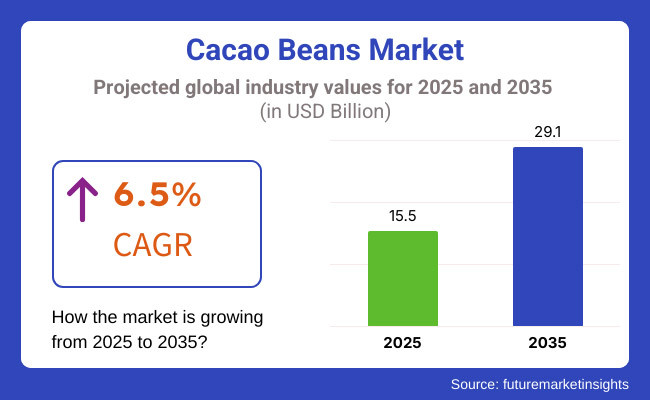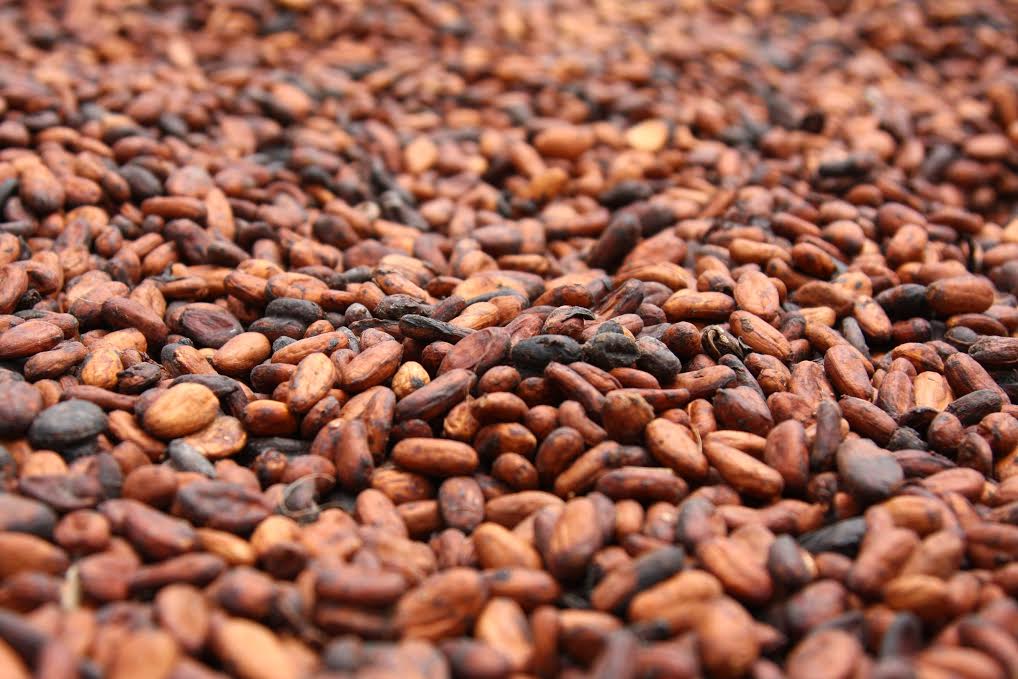
The global cacao beans market is poised for robust growth, projected to surge from USD 15.5 billion in 2025 to USD 29.1 billion by 2035, registering a CAGR of 6.5%. Growing consumer awareness around health benefits, ethical sourcing, and premium chocolate experiences is driving demand, particularly in Western Europe, North America, and parts of Asia. Innovations in craft chocolate and expanding applications across functional foods, cosmetics, and dietary supplements are reshaping the industry landscape.
Unveil Market Trends: Get Your Sample Report Now: https://www.futuremarketinsights.com/reports/sample/rep-gb-11089
Market Trends Highlighted:
Premiumization and Craft Chocolate Movement: Consumers are shifting toward high-quality, bean-to-bar chocolates, driving demand for fine-flavor cacao beans.
Sustainability and Ethical Sourcing: With the rise of environmental consciousness, Fair Trade and deforestation-free cacao sourcing have become central to market strategies.
Functional and Plant-Based Applications: Cacao is seeing increasing integration into health foods, plant-based beverages, and wellness products, especially in markets like the USA, UK, and Japan.
Single-Origin and Specialty Cacao: Niche segments such as single-origin, organic, and exotic-flavored cacao are gaining traction, appealing to discerning consumers.
Direct Trade Relationships: Brands are bypassing traditional supply chains to work directly with farmers, ensuring better quality and transparency.
Surge in Market Demand: Explore Comprehensive Trends and Analysis in Our Full Report: https://www.futuremarketinsights.com/reports/cacao-beans-market
Key Takeaways of the Report:
- The global cacao beans market is forecasted to grow at a CAGR of 6.5% from 2025 to 2035, reaching USD 29.1 billion by the end of the forecast period.
- Western Europe and North America continue to dominate demand, while Peru and the Philippines are emerging as high-growth regions due to investments in specialty cacao and sustainable production.
- Germany is expected to lead global consumption in 2025, while the USA continues its dominance in premium chocolate driven by health-conscious consumers.
- Ethical sourcing, direct-trade models, and clean-label trends are playing critical roles in shaping consumer buying behavior across regions.
- The rising use of cacao in non-confectionery segments such as functional food, personal care, and supplements is opening up new avenues for growth.
Regional Market Outlook:
- United States:
The U.S. market is thriving due to increasing preference for organic, health-oriented chocolate and the surge in artisanal “bean-to-bar” makers. Fair Trade and sustainability certifications play a significant role, and the integration of cacao in supplements and wellness products is accelerating growth.
CAGR (2025–2035): 6.8% - United Kingdom:
The UK sees rising demand for dark, dairy-free, and ethically sourced chocolates. Cacao’s health benefits are increasingly recognized, particularly its antioxidant and mood-boosting properties, driving growth in the premium chocolate and health food sectors.
CAGR (2025–2035): 6.2% - European Union:
Germany, France, and Belgium are leading premium chocolate production. EU regulations on ethical sourcing and deforestation-free cacao supply chains are bolstering consumer trust. Bean-to-bar and single-origin chocolate trends further boost market development.
CAGR (2025–2035): 6.4% - Japan:
Japan’s market is fueled by demand for high-cocoa and low-sugar chocolates. Exotic flavor innovations and premium boutiques are on the rise, with cacao incorporated into a range of novel products including matcha-infused and fermented snacks.
CAGR (2025–2035): 6.1% - South Korea:
South Korea is emerging as a key player in the artisanal chocolate space. A growing interest in cacao for health and beauty applications and the rise of specialty chocolate boutiques are enhancing market potential.
CAGR (2025–2035): 6.6%
Competition Outlook:
The cacao beans market is experiencing rapid transformation, driven by innovation, sustainability, and evolving consumer preferences. Established chocolate giants are being challenged by a growing number of artisanal and craft producers leveraging direct-trade and bean-to-bar models. The shift toward premium and ethically sourced cacao is prompting major players to invest in transparent supply chains and diversify their product portfolios into functional foods, beverages, and cosmetics.
Company Profile
- Barry Callebaut
- Cargill, Inc.
- Olam International
- ECOM Agroindustrial Corp.
- Touton S.A.
- Blommer Chocolate Company
- The Hershey Company
- Nestlé S.A.
- Guittard Chocolate Company
- Divine Chocolate
 Explore Functional Food Ingredients Industry Analysis: https://www.futuremarketinsights.com/industry-analysis/functional-food-ingredients
Explore Functional Food Ingredients Industry Analysis: https://www.futuremarketinsights.com/industry-analysis/functional-food-ingredients
Key Segments
By Bean Type:
- Forastero
- Trinitario
- Criollo
By Application:
- Food and Beverages
- Bakery and Confectionery
- Beverages
- Dairy Products
- Syrups, Toppings and Fillings
- Other Applications
- Pharmaceuticals
- Cosmetic and Personal Care
By Nature:
- Organic
- Conventional
By Sales Channel:
- B2B
- B2C
- Hypermarkets/Supermarkets
- Convenience Stores
- Independent Grocery Stores
- Specialty Stores
- Online Retail
By Product Type:
- Cacao Powder
- Cacao butter
- Paste/Liquor
By Voluntary Sustainability Standard (VSS):
- UTZ Certified
- Rainforest Alliance
- Fairtrade International
By Region:
- North America
- Latin America
- Europe
- East Asia
- South Asia
- Oceania
- Middle East and Afric





